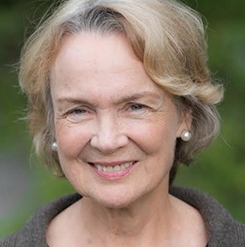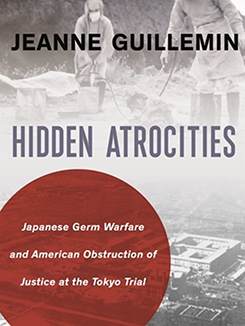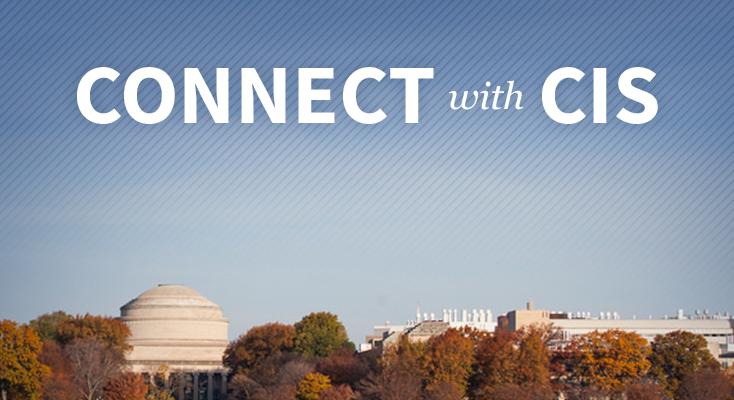Jeanne Guillemin's recent book Hidden Atrocities is about Japanese germ warfare and American obstruction of justice at the Tokyo trial. Featured here is an excerpt. The image below shows Japanese soldiers wearing gear that protected them against their own troops' resort to chemical warfare during the 1935 battle for Shanghai.

Jeanne Guillemin is a senior advisor at the MIT Security Studies Program. Photo: Jean-Baptiste Guillemin
On May 3, 1946, the International Military Tribunal for the Far East (IMTFE) officially opened, with film cameras whirring and flashbulbs popping. The spectacle was planned to attract the world’s attention, which it did, although not as a well-orchestrated triumph for justice. The courthouse was located inside the large former War Ministry building, in the Ichigaya District of Tokyo. The War Ministry was positioned high on a hill and protected by a fence and armed Allied guards. Starting at 7 AM that morning, two lines formed, one at the side entrance for the Japanese, the other at the main door for the Allies and their guests. The defendants, on public view for the first time since Japan’s defeat, were driven over in a bus from Sugamo Prison. Two hours later, the nine judges arrived in limousines.
At a cost of a million dollars, the ministry’s gymnasium and assembly area for cadets had been transformed into a replica of the Nuremberg court, high-ceilinged, with oversized windows, in grand European style. By 10 AM all the gallery seats were filled and the press box on the ground floor was jammed with a mix of Western and Japanese reporters.
At 10:30, the Klieg lights hanging from the ceiling were switched on and the filming began. Spectators and news reporters leaned forward expectantly as 26 well-guarded defendants (two were still in transit) filed into the courtroom, on public view for the first time since the war’s end. After a forty minute delay Court President Sir William Webb led the judges into the hushed, packed courtroom and up the stairs to the bench. The order of the judges’ seating had been determined by Webb, in consultation with General MacArthur. Webb was at the center, with the only microphone on the bench reserved for him. On his immediate left was China’s Judge Mei, who had argued successfully to be seated in a place of privilege. Next to Mei was Judge Zarayanov from the USSR, followed by France’s Bernard, and New Zealand’s Northcroft. On Webb’s right was US Judge Higgins and next to him Britain’s Lord Patrick (whom Mei had displaced), followed by Judge McDougall of Canada, and the Netherlands Judge Röling. The two end seats were reserved for the most junior members, the Philippine’s Judge Jaranilla and India’s Judge Pal, still to arrive.

Hidden Atrocities: Japanese Germ Warfare and American Obstruction of Justice at the Tokyo Trial by Jeanne Guillemin (Columbia University Press, 2017). Guillemin's book was nominated for the Pulitzer Prize, the Lemkin Award from the Institute for the Study of Genocide, and for the Robert K Merton Award from the American Sociological Society.
President Webb made a brief opening statement, which was then translated into Japanese. He spoke of the bench’s commitment to administer justice fairly. “To our great task,” he said, “we bring open minds on both the facts and the law. The onus will be on the prosecution to establish guilt beyond a reasonable doubt.” To finish, he waxed even more grandiloquent: “There has been no more important criminal trial in all history.”
Following a brief preamble by Chief of Counsel Joseph Keenan, the prosecution began by reading Count 1, from which the other 54 counts, more or less coherently expressed, had been derived. From January 1, 1928 until September 2, 1945, the charge went, the defendants together and with others participated in a common plan, whose object was “that Japan should secure the military, naval, political and economic domination of East Asia and of the Pacific and Indian Oceans, and of all countries and islands therein and bordering thereon and for that purpose should alone or in combination with other countries having similar objects, or who could be induced or coerced to join therein, wage declared or undeclared war or wars of aggression, and war or wars in violation of international law, treaties, agreements and assurances, against any country or countries which might oppose that purpose.”
And so, the charge continued, to the detriment of the Japanese people, the defendants engaged in a conspiracy with Nazi Germany and Fascist Italy to “secure the domination and exploitation by the aggressive States of the rest of the world, and to this end to commit, or encourage the commission of crimes against peace, war crimes, and crimes against humanity as defined in the Charter of this Tribunal, thus threatening and injuring the basic principles of liberty and respect for the human personality.”
At 3:40 PM, Webb called for a short recess to allow the press to photograph the defendants. When the court reconvened at 4 PM, the reading of the charges continued. Just as a clerk was describing Japan’s December 7, 1941 attack on Pearl Harbor initiating an illegal “war of aggression,” the propagandist Okawa Shumei, who was seated directly behind Tojo Hideki in the dock, reached forward and slapped the former premier on the head. Caught on camera, the premier winced and grimaced. As Okawa reached to strike Tojo again, two military policemen took hold of him and dragged him from the courtroom. Given the uproar that followed, President Webb called for a recess until the next morning. US journalists assessed the IMTFE commencement harshly—one called it a “third string road show” much inferior to Nuremberg—and some among the judges, particularly New Zealand’s Northcroft, were dismayed by the bright lights and pandering to the media.
The IPS prepares
Back at the Meiji Building, the China Division team held daily meetings to organize its presentation. Chief Prosecutor Hsiang Che-chun would make the opening statement. He and his secretary Henry Chiu would handle the opium charges, while four to five American attorneys, including Colonel Thomas Morrow and David Nelson Sutton, who had spent a month gathering evidence in China, would fill in to argue the rest of the case.
The Chinese Division, like the others at the International Prosecution Section (IPS), was under pressure to adapt its evidence to a standard format that would allow Keenan’s Special Assistant Eugene Williams to coordinate the overall case argument. Williams cited a particular model for the “Form of Brief” he wanted: the one being drafted by Colonel Morrow entitled “All China Military Aggression 1937-1945.”
Repressed evidence
Unknown to Sutton, whose investigation of Japanese 1940-1941 plague attacks on China had foundered due to insufficient evidence, the Military Intelligence Division of the War Department in Washington was circulating a Top Secret report that emphasized the centrality of germ weapons to national security. Called Biological Warfare: Activities and Capabilities of Foreign Nations, the report asserted that the Soviet Union, France and Great Britain could wage large-scale biological weapons within five years. “Biological warfare,” the authors stated, “is a demoralizing, silent, and insidious weapon which can be used in a ‘sneak attack’ far more destructive than the strike at Pearl Harbor.” In a concluding statement, intelligence analysts stated that significant quantities of biological agents were immediately available to the “probable enemy” of the United States, referring to the Soviets. The US should be prepared, the report urged, to strike the enemy’s populated areas.”
The report also contained an update on the Japanese germ warfare program based on classified G-2 inquiries that had yielded detailed information on Unit 731 in Manchuria and its leader, General Ishii Shiro.
Instead of intelligence, Sutton received a curious fragment of information from the Chinese Division. On May 9, Sutton found a note on his desk from Judge Hsiang and with it several translated pages of testimony. On April 17-19, in a small town west of Tokyo, Mr. C.C.H. Hataba had been interrogated by an unidentified agent, likely American. Hataba identified himself as a former member of the Epidemic Prevention Section of the Ei 1644 Forces in Nanjing. Starting in May 1942, Hataba recounted, the Japanese army caused “a great scourge” throughout the Zhejiang and Jiangxi provinces. As they drew back their forces, they wanted to leave only devastation for the KMT troops. “They were angry, too,” he said, “at the Chinese who had sheltered your Doolittle pilots, so they executed them. It is said that they brought in General Ishii to infect the region with terrible diseases. He had made his reputation with the plague attacks and promised the army he could do even worse killing and get away with it again.”
Hataba, who had not witnessed any germ attacks, offered the name of Tatsuzawa Tadao, a member of his unit who “flew to the front lines to scatter microbes.” Sutton immediately jotted a note to ask GHQ’s Legal Section to locate this pilot, whose testimony could verify Hataba’s account.
On May 5, Colonel Morrow’s report on Japanese chemical warfare in China for Chief of Counsel Keenan went to General Headquarters and Major General Willoughby at G-2. It was then forwarded to Major General Alden Waitt in Washington.
On Wednesday May 13, Morrow and Kenneth N. Parkinson, another IPS attorney, submitted to Keenan their “Form of Brief” on “All China Military Aggression, 1937-1945.” The draft meticulously described the relevant counts of the Indictment as they related to China’s charges against Japanese defendants. Into the argument, Morrow inserted Japanese chemical warfare, a violation of The Hague Conventions:
This waging of war by Japan in China was characterized by gross violations of international law and treaties, by massacre of civilians and Chinese soldiers, prisoners of war, and by the outlawed use of poison gas.
Starting with his own list of Chinese witnesses, Morrow quoted testimony from Major General Chang, deputy director of China’s Army Medical Corps, who stated that the Japanese used poison gas at Ichang (outside Shanghai), where he “personally saw men who were burned about the eyes, arm pits, and the crotch whose cases were diagnosed by himself. He saw 30 or 40 soldiers affected this way.” A photographer at the scene, Major Yang Chu Nien, a gas defense officer of the 34th Army group, could testify to having observed soldiers badly blistered by vesicants. Brigadier General Wang Chang Ling, director of the army’s gas defensive administration, could testify that in 1943 he found on a battlefield fifteen-centimeter howitzer shells containing highly lethal hydrocyanic (prussic) acid, banned after World War I, and that he saw a dozen soldiers suffering from gas poisoning by the Japanese, three of whom died. The general still had his notebook containing his notations of analyses of the contents of the shells.
As for official data, Major Woo Chia Shing of the Chinese Army, a custodian of records obtained from the Japanese Ministry of War, stated that 26,968 persons were injured by poison gas in the Sino-Japanese war, of whom 2,086 died. These records, the Major said, showed that gas was used by the Japanese 1,312 times in ten battles. In its 1938 complaint to the League of Nations, China had identified Field Marshal Hata Shunroku and General Matsui Iwane, both indicted by the IPS, as the principle “defendants” responsible for chemical warfare in China.
On this same May 13, Sutton received a message from the Central Liaison Office of G-2, to which Legal Section had forwarded his inquiry about the pilot from Unit 1644. It read: “Tatsuzawa Tadao, a lance corporal of the “Ei” 1644 Force, cannot report as directed, because the said Force has not yet been repatriated from China.” A potential witness to back up Mr. Hataba’s statement about biological warfare had come up missing.
The next day Sutton found out that he had lost another witness. On his desk was the summary of the interrogation of the Reverend E. J. Bannan by Lieutenant Colonel Arvo Thompson of CWS regarding the alleged 1941 plague attack on Changde, conducted on April 22 in San Francisco. General Willoughby in Tokyo and General Waitt in Washington had received their copies a week before Sutton.
According to Thompson, Bannan, an eyewitness to the air attack on the city, remained certain that the subsequent outbreak of plague in Changde was caused by a deliberate Japanese experiment in bacteriological warfare. In his conclusion, though, Thompson dismissed Bannan’s testimony for its reliance on “assumptions, suspicions, and unexplained facts.”
Meanwhile, at the court, the defense counsel introduced the taboo subject of the atomic bombing of Hiroshima. If Japanese leaders could be individually accused of bombing Pearl Harbor, then the same culpability should apply to the American decision to bomb Hiroshima. Webb huffily dismissed the argument, with its obvious accusation of President Truman.
For Major General Waitt in Washington, Hiroshima had seriously challenged the future of chemical warfare operations by outclassing them. Yet advanced chemical weapons, he believed, could eventually match the strategic capability of an atom bomb. The UK Chemical Defence Advisory Board had already pondered the future of chemical weapons and settled on nerve gases (toxic, easily disseminated, and odorless) as its advantage in the new nuclear age. With claims that chemicals (along with biologicals) were “weapons of mass destruction,” Waitt foresaw similar possibilities for the CWS program, provided it had latitude for first use. According to the US Army’s “Rules of Land Warfare,” the United States, not having ratified the 1925 Geneva Protocol, was not prohibited from the use of “toxic or nontoxic gases, or the use of smoke or incendiary materials,” but President Truman had continued the Roosevelt policy of “retaliation only.” What Waitt sought was complete latitude to attack the enemy first, based on the belief that Soviet attacks were nearly inevitable.
If Japan were to be prosecuted for chemical warfare, as Waitt knew that Colonel Morrow was proposing, the publicity could cause a reprise of World War I revulsion against noxious gases. It could emerge that the Japanese military used chemical weapons against Chinese civilians, to flush them out of hiding places, for example, or lay siege to villages, which would link the US chemical program to another barbarity. The revelation that Japanese munitions contained hydrocyanic acid, the killing agent in Zyklon-B used to exterminate Jews in Nazi concentration camps, could only arouse more antipathy. If China’s chemical warfare charges went forward, the entire, dark history of Japan’s CW munitions industry could also emerge, to the detriment of Waitt’s plans to increase US production and include nerve agents.
In mid-May, Volume I of the CWS report on Japanese chemical warfare was issued. Volumes II-VI had already been completed, making this one a culminating statement. Apparently made for broad distribution, the report was a whitewash. Its numerous battle plans from Japanese sources referred only to the use of “smoke,” never to any lethal gas agents—as if the Japanese had never manufactured munitions of mustard gas, lewisite, phosgene or prussic acid and used them in China.
Following this report, with intervention from CWS and G-2, the Chinese Division’s chemical warfare charges against Japan were deleted from the IPS case argument. With the cooperation of Williams, the May 13 “All China Military Aggression” draft that laid out those charges was transformed into a sanitized May 24 version that removed all the “best evidence” Morrow had assembled—the promised eye-witness testimony, hydrocyanic acid analyses, diaries, photographs, and victim counts—and referred only vaguely Japan’s use of “poison gas.” Tear gas, sneezing and vomiting gases, not vesicants, were used, causing only “a very small proportion” of the 3.8 million “total casualties suffered by China during the war.”
The May 24 report also distanced the prosecution from China’s initial complaint to the League of Nations about Japanese CW in 1937:
The reference to the use of poison gas in this warfare appears to have been made in the form of a complaint by the Chinese to the effect that the Japanese army used gas in Shanghai three and four October 1937, but which the Japanese emphatically deny.
With its accusations of CW reduced to a “complaint” and its germ weapons charges without proof, the Chinese Division pursued prosecution for the more flagrant Japanese crimes resulting from “aggressive war” and “crimes against peace.” The enormity of their 3.8 million “total casualties” would carry their arguments, not Japan’s disregard of the laws of war or treaties to prevent chemical or biological warfare.




